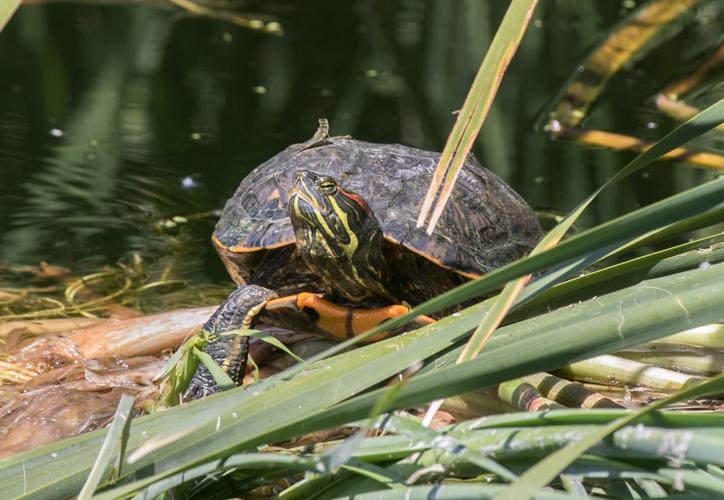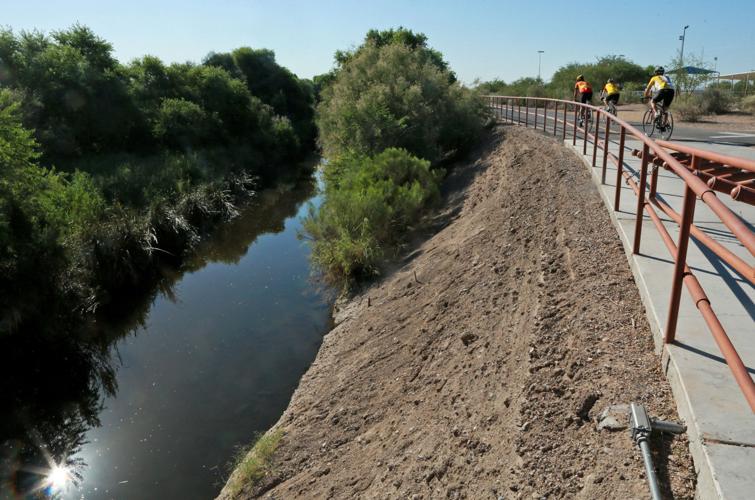Three years after the county spent over $600 million on the Agua Nueva and Tres Rios wastewater treatment plants, the Lower Santa Cruz River is now home to four different fish species, one of a handful of ecological indicators that show its health is improving.
That finding comes from a recent study conducted by the county and the local nonproft Sonoran Institute. It was the third and final one looking at the ecological impacts of the upgrades, and was paid for by the U.S. Environmental Protection Agency and two county departments.
The four species of fish — Western mosquitofish, green sunfish, black bullhead and common carp — are not native. But the Sonoran Institute’s Claire Zugmeyer, an ecologist and one of the report’s authors, said she is “hopeful” about the prospect of native species like the longfin dace and Gila topminnow also returning.
Additionally, bug life along the river also became more diverse, the study found.
“With these upgrades to the treatment facilities, we have such improved water quality that it’s creating habitat for fish and other wildlife, as well as just maintaining the river heritage that we have in Tucson,” Zugmeyer said.
Breathing easier
Noxious smells emanating from the facilities are well under regulatory thresholds, the study also found.
Improvements made in the mid-2000s dramatically reduced the reach of unpleasant odors. Since the most recent improvements, which included replacing the old Rogers Road plant with the Agua Nueva plant, concentrations of hydrogen sulfide, which smells like rotten eggs, have been below 0.5 parts per billion in nearly every sample taken. Up to 10 ppb are allowed by the facility’s permit, according to the report.
“People would know when they arrived to Tucson when they smelled Tucson,” Zugmeyer said with a laugh of the old plant.
The plant improvements were paid for with substantial increases in sewer user fees, which were about $11 per month in 2003 and rose steadily to over $40 per month by 2014, according to a 2014 county report on the project. The upgrades were intended to meet new regulatory standards for wastewater treatment plant discharges set by the Arizona Department of Environmental Quality in the mid-2000s.
Beyond increased fish diversity, water quality and clarity also improved over the study period. Total suspended solids were down in most of the roughly 25-mile stretch of the river studied, as was turbidity, a measure of water cloudiness. Levels of ammonia, which can be toxic to fish and other animals at high concentrations, were also down significantly, though standards were still exceeded in some cases.
Concentrations of potentially hazardous heavy metals, like cadmium, were also well within regulatory parameters, though Zugmeyer said there wasn’t a preexisting problem with them that the plant improvements were intended to address.
Fewer trees
Another change noted by researchers was a decline in tree cover along the river, especially among certain species like the Goodding’s Willow. Zugmeyer said this was likely due in part to another observed change: a drop in miles of continuous flow during dry months.
In June 2013, the lower Santa Cruz flowed continuously from the Agua Nueva plant, just south of El Camino Del Cerro, to Trico Road, roughly 23 miles to the northwest. In June 2015, the river flowed around 16 miles.
Zugmeyer chalked that up to increased infiltration along the waterway, which means more aquifer recharge, but also spells trouble for some of the plant species along the river. So-called upland plants, like burrobush and some grasses that do not need stable water supplies, have fared better since 2013.
A copy of the report is included in the online version of this story, and can also be found at tinyurl.com/hvjan5a






